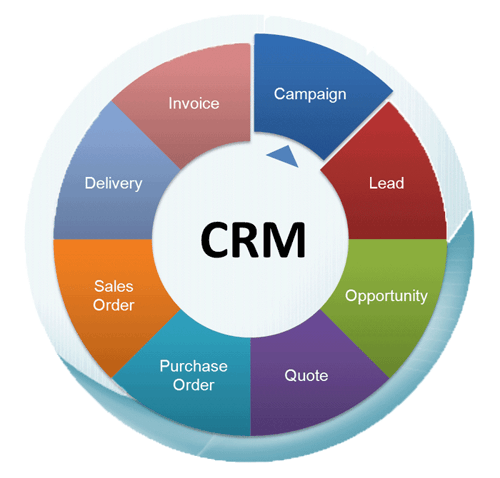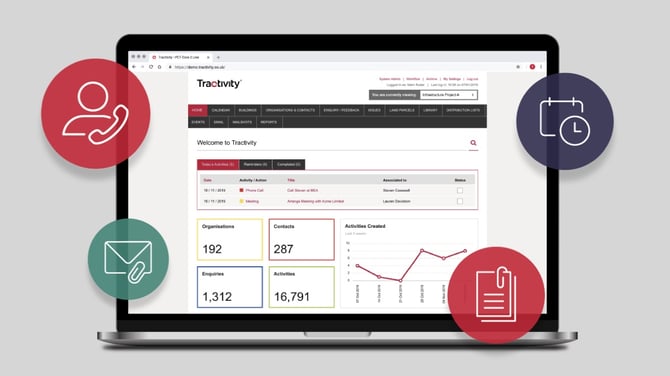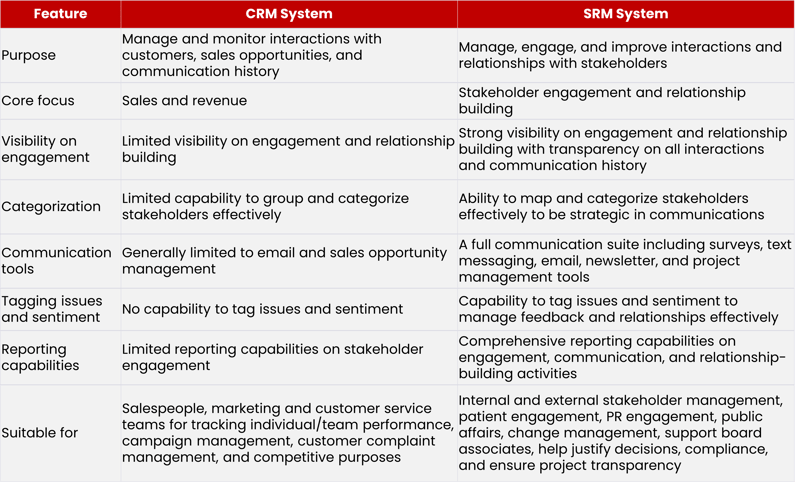You might be looking into purchasing a CRM system and wondering if it could manage stakeholder information and support stakeholder engagement.
After all, how different can these two systems be?
Which one would be the right tool for your needs? Do you need stakeholder engagement software or a CRM?
In this blog post, we'll cover the CRM and SRM definitions, break down the key differences between them and help you determine which one is best for you.
- What is a CRM system?
- What is an SRM system?
- The main differences between CRM and SRM
- CRM vs SRM comparison summary
- Can you use a CRM system for stakeholder management?
- Choosing between CRM and SRM
What is a CRM system?
A Customer Relationship Management - CRM - system is a software tool designed to help organisations manage and monitor their interactions with customers. It provides a centralized system for tracking and managing customer data, sales opportunities, and communication history.
Some of the main features of a CRM system include:
- ability to track sales opportunities,
- monitor customer activities,
- log meetings and calls,
- generate new opportunities,
- source leads.
Whilst a CRM system is sold as a ‘do it all’ tool, the truth is that they are built from the ground up to manage and nurture sales opportunities and track revenue.
The revenue value sits at the core of the reports, dashboards and activities, and its purpose is to maximise sales. Even Customer Service driven CRM systems are built around these capabilities.
So although you can track meeting levels and activity via a CRM system, its main purpose isn’t to track or have full transparency of engagements or communications with Stakeholders.
It’s about generating opportunities, sourcing leads, capitalising on those leads, and tracking a sales process or Customer Service process to achieve the desired result (i.e. a Sale or a Renewal), whilst also monitoring KPIs such as meeting levels, calls made, forecasting, and generated revenue etc.
This means the visibility on engagement and relationship building isn’t as strong as in an SRM. It also means reporting capabilities tend to be quite limited on the stakeholder front and grouping and categorising stakeholders correctly usually can’t be achieved (including tracking demographic qualities and reporting on those).
CRM systems are great performance-driven tools for salespeople, marketing and customer service teams. They allow tracking individual vs team performance, campaign management, customer complaint management and can even be utilised as a competitive tool - as opposed to a collaborative tool for the purpose of transparency, relationship & engagement.
As a result, the orientation of the whole system usually revolves around a relationship with the sales opportunity.

You can in some cases buy additional ‘bolt-ons’ to help integrate communications tools, but any reporting tends to be centred around a sales value.
When it comes to managing or engaging stakeholders, you will know that they don’t simply have a price, a cost or a value.
With different views, campaigns and changing opinions given over email, meetings, surveys and one-to-one interviews, tracking and logging their issues and sentiments isn’t as simple as sending them down a sales funnel to be a ‘conversion’.
What is an SRM system?
The Stakeholder Relationship Management (SRM) system purpose is to provide all the tools you need to manage, engage and improve your interactions and relationships with stakeholders. SRM systems put stakeholders at its core.
It is a centralised system built around your stakeholder database, to give you transparency on all of your engagements and communication history with each organisation and or individual stakeholder.
This includes mapping stakeholders and categorising stakeholders effectively. So not only you can target and be strategic in your communications strategy with these partners /stakeholders, but also group the differing interactions you are having with each of these stakeholders, not just one long list of interactions that nobody has time to read through (like a CRM provides).
An SRM also provides a full communication suite (survey, text, event management tools, text messaging, email, newsletter, and project management tools) that automatically captures responses from your stakeholders, including their thoughts and feelings, to manage these relationships effectively (including sentiment tagging and issue grouping).
This gives you transparency, making you more efficient as a team, capitalising on stronger valuable relationships with your partners across the board and allowing better internal communication within your organisation as you get visibility on all interactions with stakeholders, with less manual intervention.

An SRM system can:
- track conversations,
- produce surveys,
- tag issues and sentiment,
- manage feedback,
- manage events,
- map stakeholders,
- manage communications centrally (newsletters, emails, SMS).
The consolidation of multiple tools such as outlook (email), spreadsheets (database), Mailchimp (mailshots), Eventbrite (events) and Survey Monkey (Surveys) pulls everything into one place, updating individual stakeholder records automatically, saving time and money.
The software can be used for internal stakeholder management (employee engagement), patient engagement in healthcare, PR engagement, support board associates, help justify decisions, compliance and ensure there is transparency across the whole project or sub-projects you are running.
Key differences between CRM and SRM systems
While both CRM and SRM systems are designed to help businesses manage and improve their interactions with customers and stakeholders, they have key differences in terms of their focus and functionality.
CRMs are generally designed around revenue and sales processes, which is fundamentally different to engagement processes. SRMs are designed specifically for community and stakeholder engagement, monitoring and nurturing relationships, grouping and categorising stakeholders whilst also communicating and engaging with them in a strategic way.
A CRM is built around tracking where a contact is in a sales pipeline. An SRM is designed around understanding the engagement with the stakeholder – what they are saying to you, their needs, priorities, and concerns.
An SRM gives you the organised, segmented, up-to-date list of your stakeholders, as well as the ‘one source of truth’ visibility of all of the interactions anyone from your team is having with your stakeholders.
With an SRM you can log essential questions about the stakeholder engagement activities – Who’s been contacted about a particular issue? Where and when did consultation events take place? What were the results?
But more importantly, with an SRM system, you can perform qualitative analysis and advanced reporting on your engagement activities. You’ll always have your finger on the pulse of your stakeholder relationships and engagement!
CRM vs SRM systems - comparison summary
Here is a comparison table outlining the key differences between CRM and SRM systems, including main usages and the teams who use them:

Can you use a CRM system for stakeholder management?
The short answer is – maybe. However, your data might be flawed and you can expect to spend a lot of time working ‘against the tide’ to get the reports that you need.
At face value, Stakeholder Engagement and CRM software are similar.
They both manage complex and confusing relationships around and within a business. They both store data on communications, engagements, and contact details. They can both offer analysis and provide reports on the progress of relationships.
But their main difference is what sets them apart – their objective:
CRM systems have been designed to manage one single customer. They are tailored to help with the acquisition and retention of clients. Just one type of relationship.
SRM systems are designed to track, analyse and understand the purpose and content of the engagement with all stakeholders and all the relationship types involved.
Choosing between a CRM and an SRM
While both CRM and SRM have many functionalities in common, if your goal is to track interactions, not revenue, using a CRM is going to make things tricky, if not impossible.
An SRM system is the most suitable option to track and respond to changing data and to engage and communicate with stakeholders while remaining GDPR compliant.
It’s not impossible to use a CRM instead of a dedicated Stakeholder Engagement tool. But it is more difficult, more time-consuming and ultimately risky.
Governments, religious leaders, and local business people are all stakeholders whether or not they have an interest in a project. And an SRM system is the software that can manage these relationships and cater for the huge scope of engagement approaches that are needed to be implemented for a project to be successful.
The best SRM system
Stakeholder Engagement software, like Tractivity, is designed with the purpose of being a preventative measure against disruptions.
It acts as an aid to the kind of healthy stakeholder engagement that guarantees the long-term success of a project.
Using dedicated Stakeholder Engagement software as part of your stakeholder engagement process is not a quicker or easier option, it’s a safeguard against mishaps in the future that wouldn’t be provided by a CRM.
Tractivity Stakeholder Management System makes it easy to capture, log and track stakeholders' enquiries, feedback, and issues from multiple channels, delivering clarity through detailed analysis and insightful reports.
Its combined access to multiple data sources delivers a unique solution, adding value across your entire stakeholder landscape and allowing you to stay ahead of the matters that are important to you and your stakeholders.
Find out why Tractivity’s SRM System is fundamentally different. Book a free demo with us today and discover all the Tractivity benefits!

